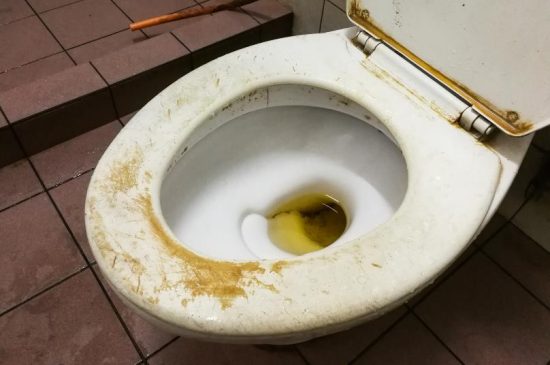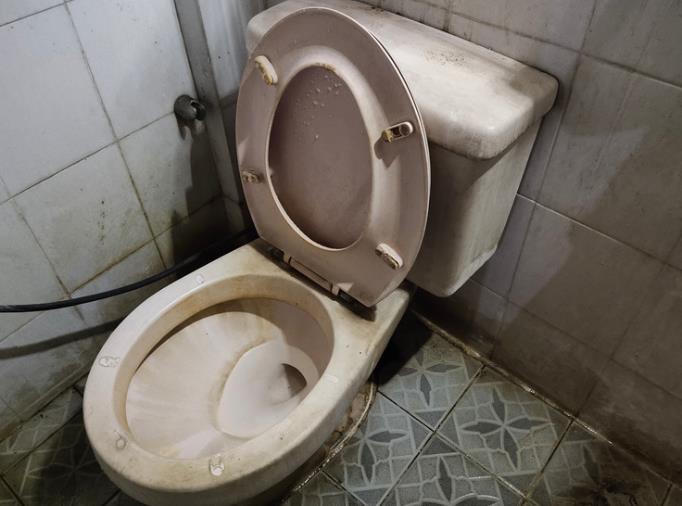Hard water stains can be quite bothersome since they can ruin a normally clean toilet. But we do not have to worry! We’ll go over all the ins and outs of permanently getting rid of those stains in this extensive guide. We can help you to understand how to remove hard water stains from toilet and identifying efficient removal techniques. We’ll also go over some preventative steps you can take to keep your toilet looking spotless.
How Hard Water Causes Stains?

Because hard water contains a lot of minerals and it evaporates. It leaves behind leftovers that result in the infamous rings and streaks. The minerals—mainly calcium and magnesium—bond to surfaces and are difficult to get rid of using typical cleaning techniques. These deposits build up over time, worsening the issue and making the stains more stubborn.
Furthermore, stains become more noticeable the longer the hard water is in the toilet bowl. So it has more opportunity to react with the surface. Thus, we have to properly treat hard water stains and restore the immaculate appearance of toilet. For that, it is essential that you grasp the root cause of them.
How to Remove Hard Water Stains from Toilet?
Vinegar and Baking Soda
This dynamic combination is a popular choice in many households for good reason. Baking soda offers a mild abrasion to remove stains, while vinegar’s acidic properties aid in the dissolution of mineral deposits. A powerful cleaning solution can be made by combining equal parts vinegar and water in a spray bottle, then immediately misting baking soda into the spots.
After allowing it to work its magic for a few minutes, scrub with a toilet brush. What was the outcome? A spotless toilet bowl free of harsh chemicals. After cleaning, flush the toilet to remove the solution and take in the spotless outcome. For more difficult stains, repeat this procedure as necessary, changing the vinegar-to-water ratio for best results.
Lemon Juice
If you prefer a more natural approach, consider using fresh lemon juice. Lemon juice is a powerful stain remover because its acidity dissolves mineral deposits. All you have to do is cut a lemon in half and massage it straight over the discolored spots, letting the juice seep into the deposits. Before scrubbing, put some salt on the lemon for extra cleaning power.
Your toilet will smell clean and lemony in addition to being stain-free. Before flushing the toilet, let the lemon juice sit for a few minutes to do its magic after you’ve washed the stains well. To get the greatest results and stop new stains from appearing, continue this method frequently.
Commercial Cleaners
Strong stains may call for a stronger solution. Commercial cleaners designed to remove hard water deposits can be very effective. Seek for products that effectively dissolve mineral accumulation, such as those containing citric or hydrochloric acid. Wear gloves to protect your skin, and make sure you always carefully follow the directions given by the manufacturer. It’s also crucial to have sufficient airflow when using these strong cleaners. To achieve maximum efficiency, let the cleanser sit for the suggested duration after applying it. Lastly, use a brush to thoroughly clean the toilet bowl before flushing to get rid of any last bits of stain.
Pumice Stone
A pumice stone can be a game-changer for stains that are very hard to remove and resist removal. To prevent scratching the porcelain surface, wet the stone and gently brush it against the soiled spots, being cautious not to apply too much pressure. The pumice stone’s abrasive roughness helps remove stubborn deposits to expose a clean toilet bowl underneath.
It is possible to overcome even the most difficult stains with perseverance and patience. Make sure to completely rinse the toilet bowl after cleaning in order to get rid of any leftover dirt, and rinse the pumice stone often while scrubbing to keep it from getting clogged with residue. After using the pumice stone, admire your job and feel the delight of a stain-free toilet bowl.
How to Prevent Staining from hard water?
In the long term, taking proactive steps to prevent hard water stains in your toilet can save you time and work. Developing a regular cleaning schedule is one smart technique. By spending a few minutes each week cleaning your toilet bowl with a mild cleaner and a toilet brush, you may eliminate any mineral deposits before they form and create tenacious stains. To avoid accumulation and maintain the cleanliness of your toilet bowl, make it a practice to clean it on a regular basis.
Adding a water softener to your house is a possible preventive strategy. The main causes of hard water stains, calcium and magnesium ions, are eliminated from the water by water softeners. The possibility of stains developing in your toilet bowl can be greatly reduced by lowering the mineral level of your water. Purchasing a high-quality water softening system will not only stop stains from occurring but also enhance the general quality of the water in your house.
Furthermore, asking family members to flush the toilet after every use can help stop minerals from building up in the bowl from stagnant water sitting there. Regular flushing reduces the chance of stains forming by ensuring that fresh water is continuously running into the toilet bowl. You may successfully avoid stains and keep your toilet bowl spotless for the benefit of all members of your household by implementing this easy habit into your daily routine.
Conclusion
In summary, removing hard water stains from your toilet is completely doable with the appropriate equipment and methods. Consistency is essential whether you use commercial cleaners and pumice stones or alternative solutions like vinegar and lemon juice. You can make sure your toilet stays spotless and stain-free for many years to come by being proactive in preventing stains and maintaining routine cleaning. Put an end to ugly stains and welcome a spotlessly clean toilet!

